
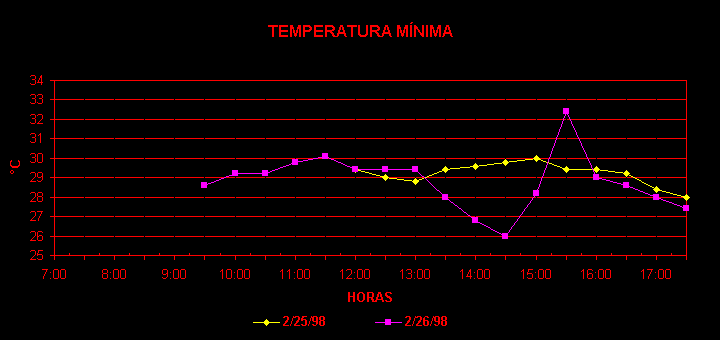


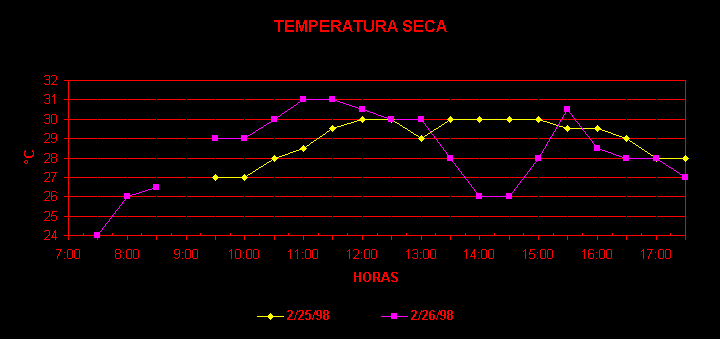

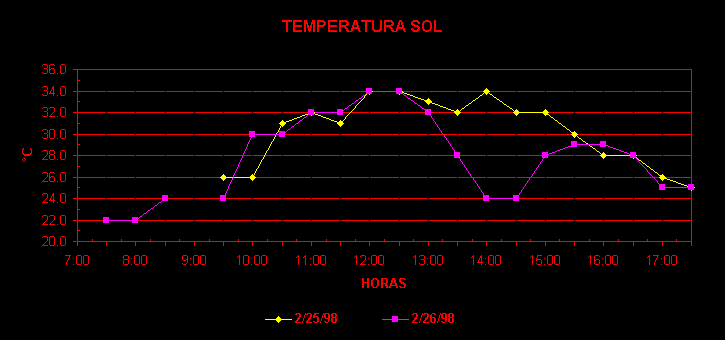
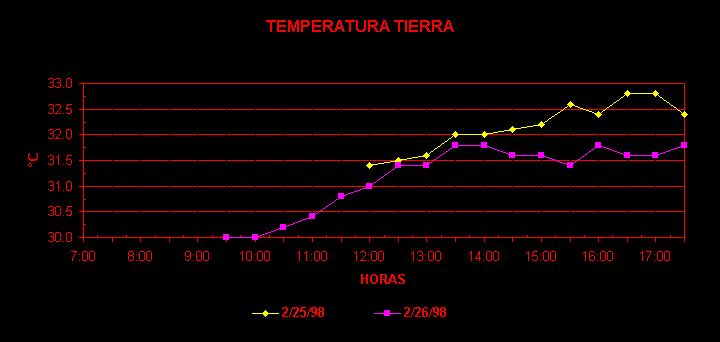
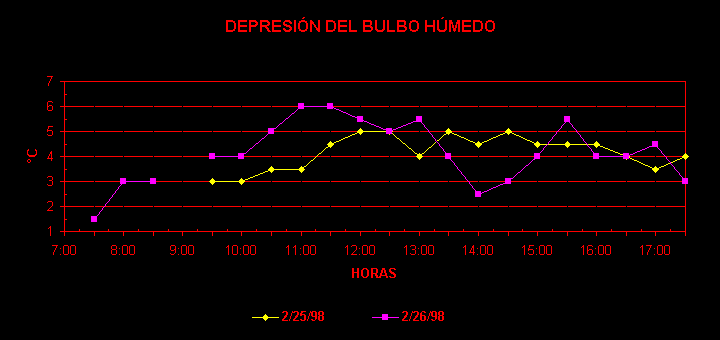

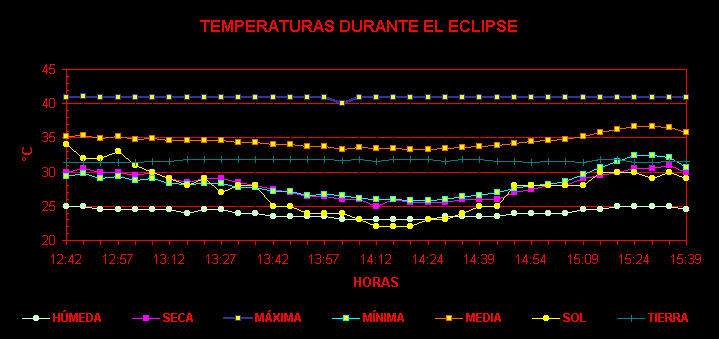

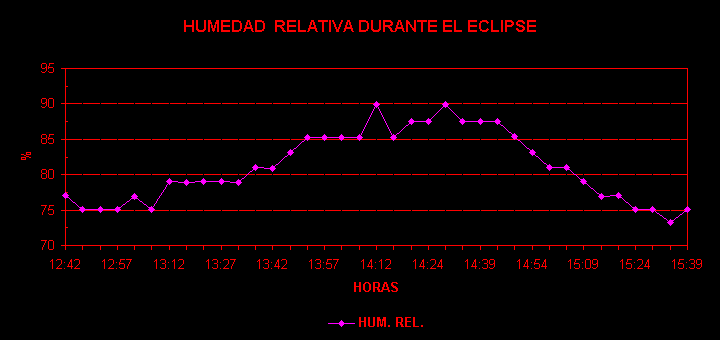













For the occasion of the February 26, 1998 total eclipse of the Sun, the OAL moved to the radio
station "La Voz de Venezuela", in the Paraguaná peninsula, to observe the changes this
phenomenon would generate on various meteorological variables.
Data were taken every thirty minutes, from 7:00 to 17:30 (Venezuelan local time), on the 25th
and the 26th of February 1998.
During the 26th data were also taken from 12:42 to 15:39, every 5 minutes, and every 2 minutes
from 14:12 to 14:14, to generate a detailed curve in this time interval, from first contact
to fourth contact.
The considered variables were:
NUBOSIDAD (Cloud Cover): Estimation of how many eighths of the sky are covered by clouds.
TEMPERATURAS (Temperatures):
- Seca (Dry): Measured air temperature.
- Húmeda (Wet): Temperature of a thermometer that had its bulb covered with a wet cloth.
- Sol (Sunlight): Is the air temperature registered with a thermometer exposed to the
Sunlight.
- Tierra (Ground): Is the temperature registered by a geothermometer buried 5cm into the
ground.
- Máxima and Mínima (Maximum and Minimum): Extreme thermal values of the air.
- Media (Median): Average between the High and Low temperatures.
DEPRESIÓN DEL BULBO HÚMEDO (Wet-bulb Depression): Difference between Dry and Wet-bulb
temperatures.
HUMEDAD RELATIVA (Relative Humidity): Calculated from Wet and Dry-bulb temperature data.
The OAL thanks ARVAL and OLT observatories for the support given to this investigation, and
all the people and institutions that supported us.
Angel E. Laya Hernández
OBSERVATORIO DEL AGUILA CON LENTES (OAL).
[Bespectacled Eagle Observatory (OAL)]
Note:
All of the ticks on a horizontal axis are in the HH:MM format
(Hours:Minutes, Venezuelan local time; UTC-4hrs.).
But for the three graphics marked "DURANTE EL ECLIPSE" (during the eclipse),
the scale is not uniform; from 14:12 to 14:24 the ticks are marked
every 4 minutes, not every 5 minutes, as in the rest of the axis.
This is because during that time interval there was an increase in the data
acquisition frequency.
![]() Updated: March 30 '98
Updated: March 30 '98
Best seen with MS Internet Explorer.
Cambiar a: versión en Castellano de esta página.
Back: ARVAL - Total Eclipse of the Sun, February 26 '98 - Images & Data
Messages: